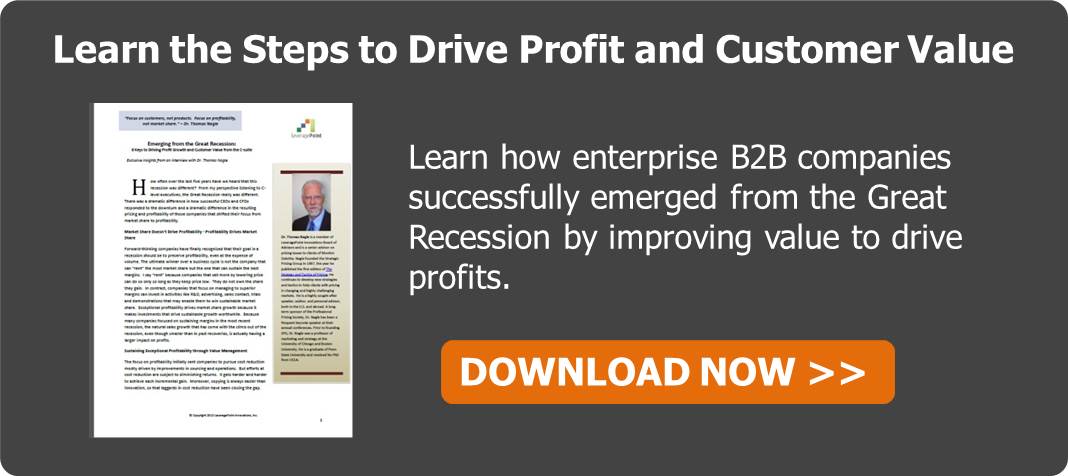 Recently, my colleague Ed Arnold dispelled the myth that implementing a value-based strategy is a costly, multi-year change management process with his blog post, How to Quickly Capture the Financial Rewards of Value-based Pricing. Using a cloud solution like LeveragePoint, our customers have already proven that you can build an effective value model from scratch in an hour or less. And after that short time, get right to using that model to make strategic product decisions or to craft effective value communications to help close deals. But most of our customers don’t stop there. The next step is to build out your libraries. Building libraries enables large groups of stakeholders to use consistent, accurate and up-to-date information.
Recently, my colleague Ed Arnold dispelled the myth that implementing a value-based strategy is a costly, multi-year change management process with his blog post, How to Quickly Capture the Financial Rewards of Value-based Pricing. Using a cloud solution like LeveragePoint, our customers have already proven that you can build an effective value model from scratch in an hour or less. And after that short time, get right to using that model to make strategic product decisions or to craft effective value communications to help close deals. But most of our customers don’t stop there. The next step is to build out your libraries. Building libraries enables large groups of stakeholders to use consistent, accurate and up-to-date information.A value library should bring together the best customer value-related content available from across an organization. When working on your own, details like how you describe a feature or how you name a value driver matter less, so long as you understand what they refer to. However, the adoption of conventions which are maintained in libraries will not only help everyone use common definitions, but will also make it a lot easier to find the right content when you need it.
So how should I organize my library? In a value library, data can be divided into the following sections, or lists: units of measure, competitors, features, benefits, value drivers, variables, data, and pricing factors. In LeveragePoint, most of these sections are already linked, as you can see in the diagram below. This means that when building value models, you can find and reuse the best value driver or competitor formulas. Then, import them using consistent units of measure, and pre-populated with fully source-documented data.

But don’t wait! Get started building each of the sections of your libraries today. And be sure to create relevant filters for each section. For example, group your features and benefits by product offerings to make it even easier to find and add them to your value models.
By investing a little energy in library management, you will reduce even further the time it takes to create value models. And the faster you build your models, the faster you can get to analyzing strategic product decisions, or crafting communications for commercial success.
About the Author:
Aaron Miller is Director, Customer Service for LeveragePoint. In his role, Aaron manages customer relationships and provides technical support and training for customers. Aaron also works closely with the product team on tactical decisions, representing the voice of the customer.



